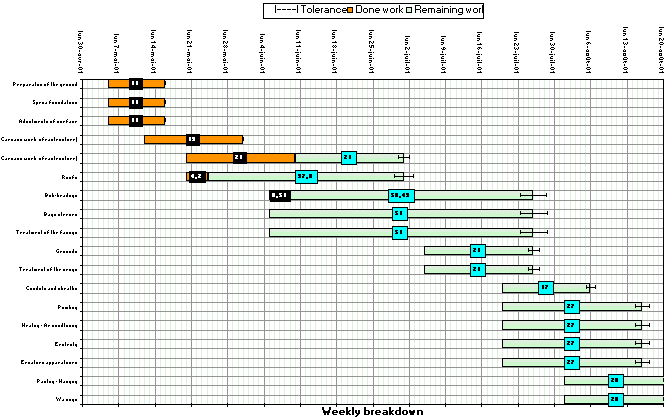
The delay periods were then given a daily delay cost and presented to the client as part of the claim along with the supporting documentation. I simply spanned these periods of time with an activity that represented the delay. The construction process had been started and stopped for about 2 months due to late change notices. This caused about a month of confusion and eventually we got rid of it as the extra detail did not help our case. This was an after the fact addition that did not make use of project documentation that was officially issued at that time in the project.

However, I was under pressure from the project manager to create a hypothetical baseline that did not correspond with the original baseline schedule. I used this as the project baseline and I used the as-built schedule as the current project. I had the schedule that existed at the start of the project. The schedule had not been updated regularly enough to demonstrate a clear picture of how changes in the engineering design had affected the construction process of the electrical buildings. The subcontractor who was building the electrical buildings at the heart of the project was not communicating with the client due to payment disputes. The project team had changed over the life of the project and only one person had been present since the start. My job started in less than ideal circumstances. This is not the textbook example of how to manage a delay claim with Primavera P6 but hopefully it will highlight a few interesting areas of discussion here on Plan Academy. I would like to outline what we did in the circumstances and the issues that I dealt with. This was the first major delay claim I had been involved in.

There were a number of colourful characters working on the project and on more than one occasion security had to be called to remove one of the project team from a particularly heated contract discussion. The only firm Primavera P6 schedules that I had were the original contract schedules and the as-built schedule that I updated when I was contacted for the project. To make matters worse, there were no schedule updates over the period of the delay. Communication and contract issues between my employer and the fabrication yard resulted in a delay of over a year from the original contract date to the final delivery.

The main design engineer made a number of fundamental design changes in the first year of the project. I was working as a Primavera P6 planning for an electrical supplier who had subcontracted out the construction of a number of electrical buildings to a fabrication yard. A few years ago, I worked on a project where I was asked to document a delay claim.


 0 kommentar(er)
0 kommentar(er)
